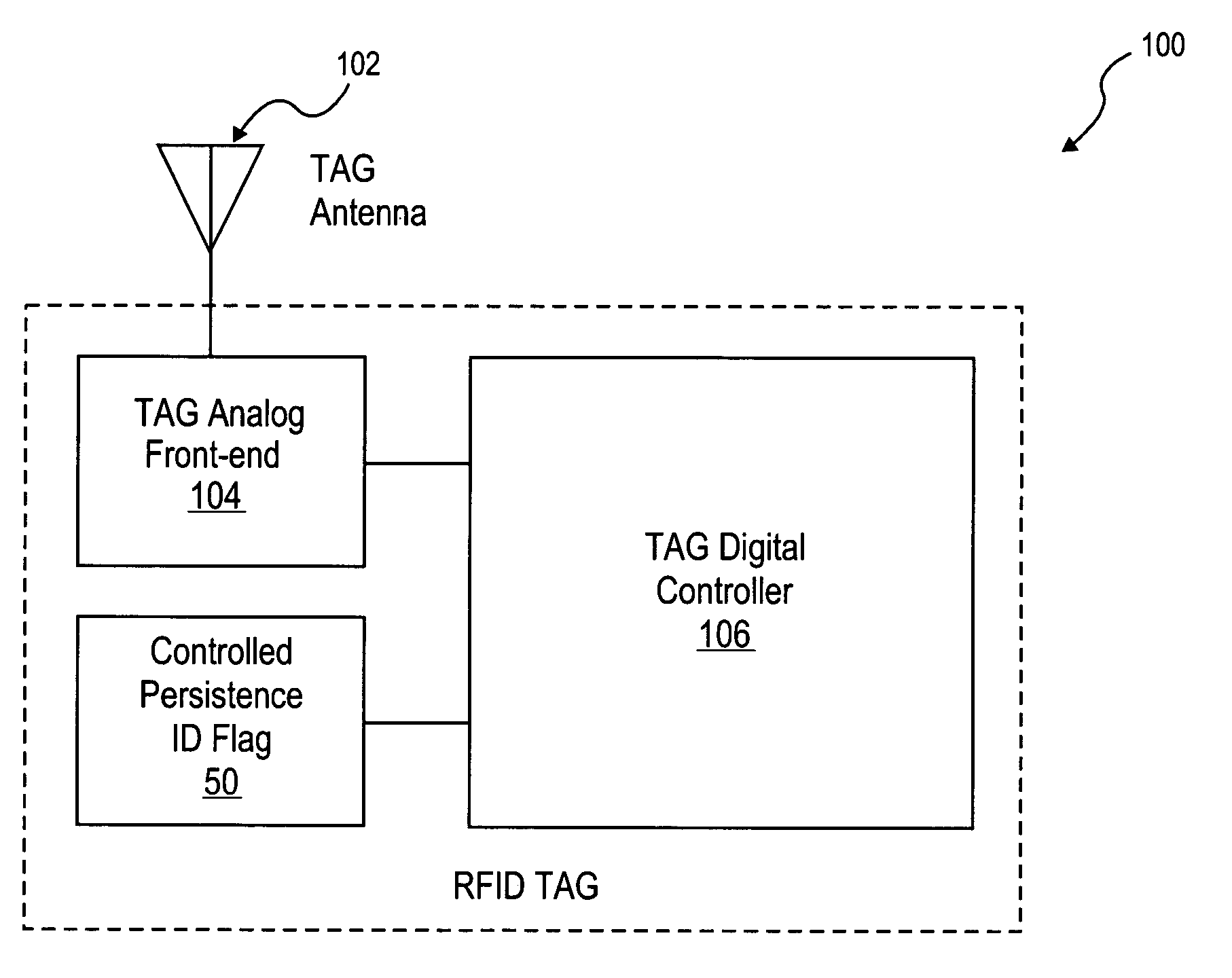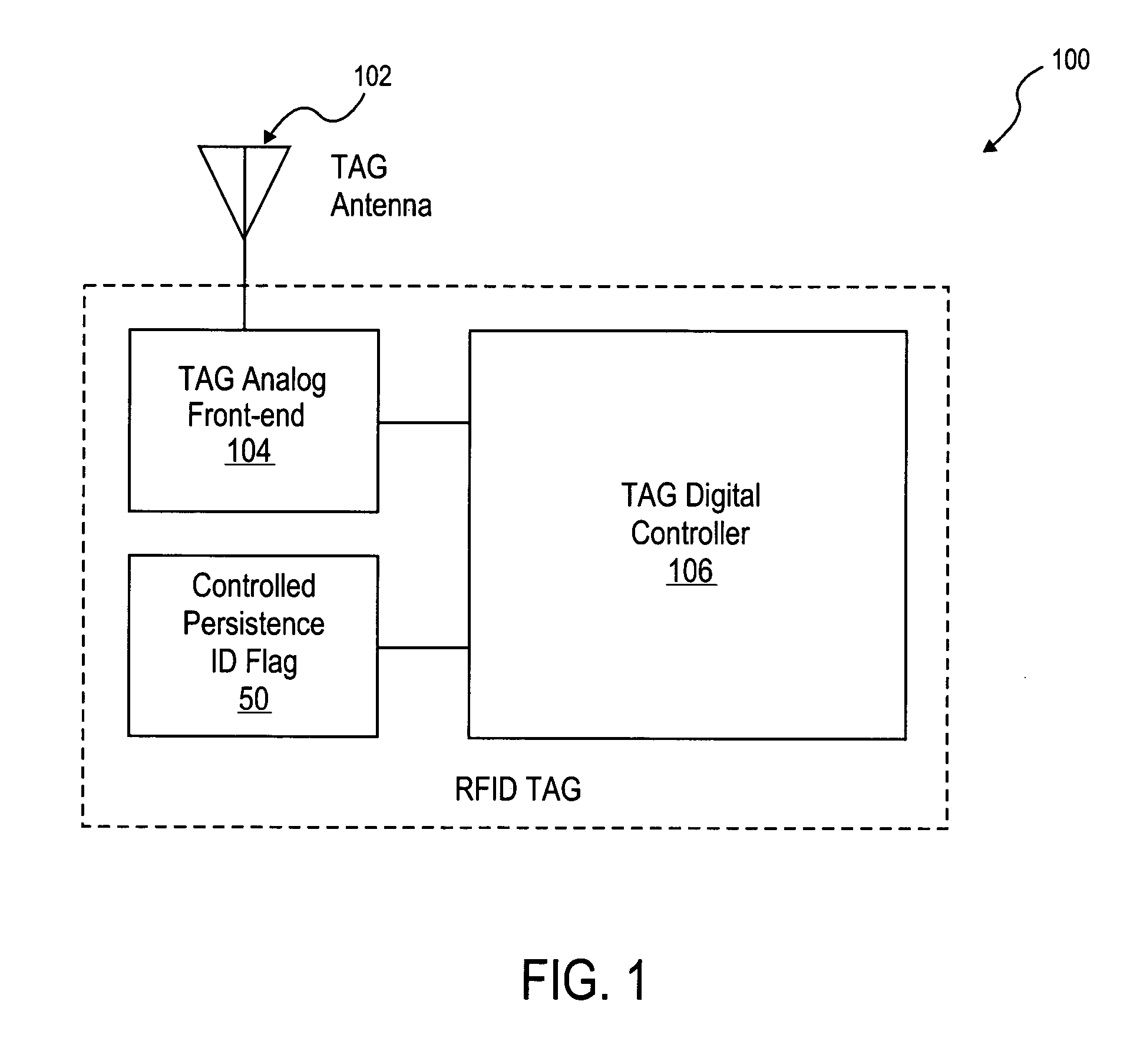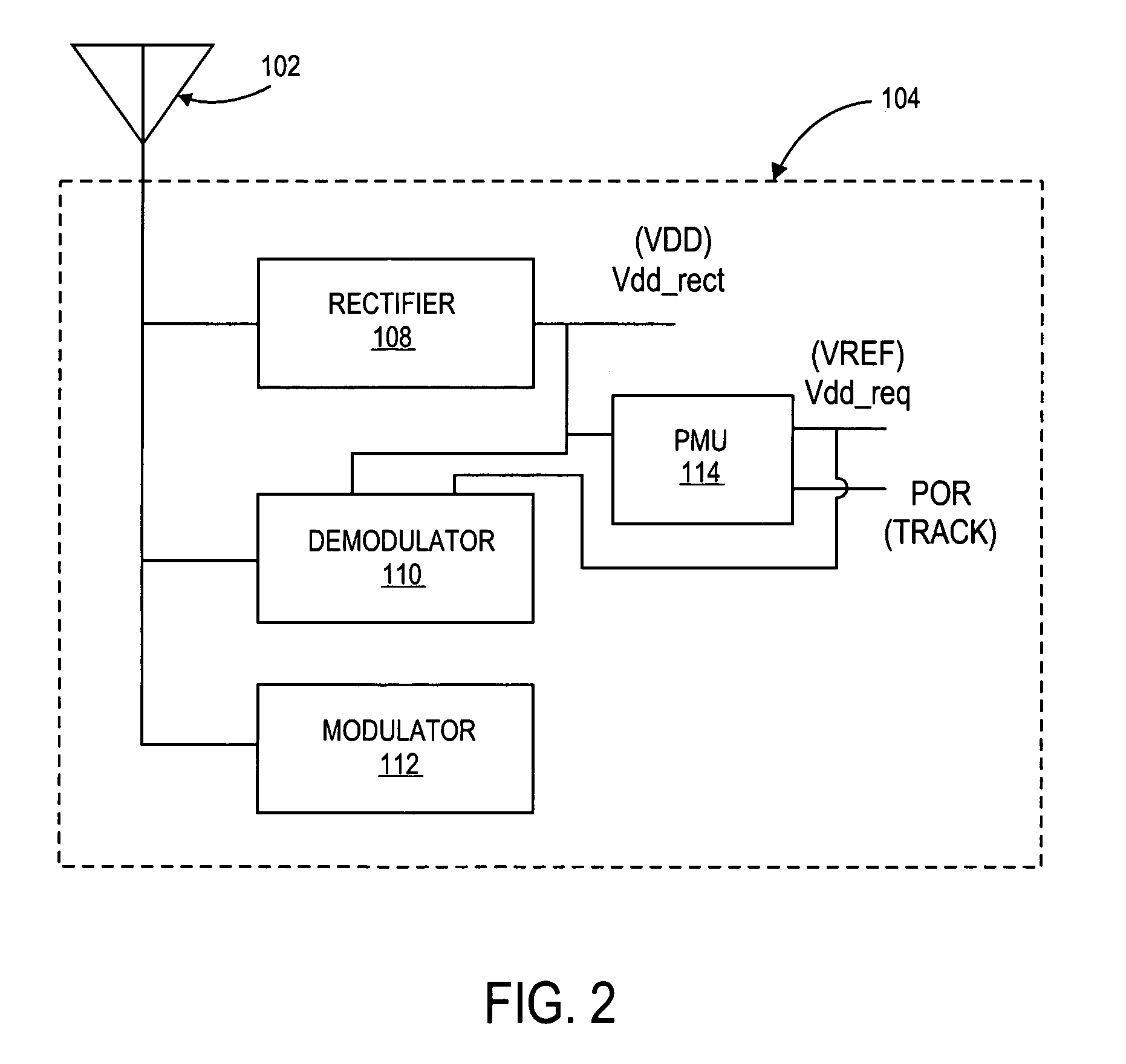Method and apparatus for controlled persistent ID flag for RFID applications
a technology of rfid tags and id flags, applied in the field of radio frequency identification (rfid) transponders, can solve the problems of mainly leakage, inefficient process of identifying a rfid tag that has previously been identified, and loss of state information of rfid tags that are not well powered
- Summary
- Abstract
- Description
- Claims
- Application Information
AI Technical Summary
Benefits of technology
Problems solved by technology
Method used
Image
Examples
Embodiment Construction
[0031]A method and apparatus to implement a controlled persistent identification (ID) flag for RFID applications are described. In the following description, for purposes of explanation, numerous specific details are set forth in order to provide a thorough understanding of the present invention. It will be evident, however, to one skilled in the art that the present invention may be practiced without these specific details.
[0032]Because passive RFID tags do not have an independent source of power, it may be desirable that the tag state can be maintained during the temporary power loss (e.g., when the RFID tag is no longer illuminated by an interrogator RF signal). Passive RFID tags receive power from an RF link. An RF link may not be reliable and thus temporary power drops are not uncommon. The following scenario may illustrate a situation that an ID flag or persistent storage bit is intended to address.
[0033]Consider a population of tags, for example, affixed to a number of cases ...
PUM
 Login to View More
Login to View More Abstract
Description
Claims
Application Information
 Login to View More
Login to View More - R&D
- Intellectual Property
- Life Sciences
- Materials
- Tech Scout
- Unparalleled Data Quality
- Higher Quality Content
- 60% Fewer Hallucinations
Browse by: Latest US Patents, China's latest patents, Technical Efficacy Thesaurus, Application Domain, Technology Topic, Popular Technical Reports.
© 2025 PatSnap. All rights reserved.Legal|Privacy policy|Modern Slavery Act Transparency Statement|Sitemap|About US| Contact US: help@patsnap.com



